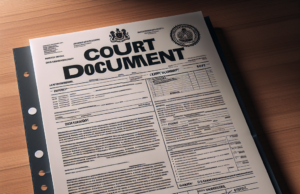
TEXAS DIVORCE LAWS & REGULATIONS UPDATE 2023
A DECADE OF CHANGE: AN OVERVIEW OF TEXAS’S DIVORCE LAWS AND REGULATIONS TIMELINE (2013-2023)
In the last decade, Texas’s divorce laws and regulations have experienced significant transformations, reflecting the state’s commitment to modernizing its legal framework while ensuring fairness, transparency, and the well-being of families involved in divorce proceedings. This article provides a succinct overview of key changes in Texas’s divorce laws and regulations from 2013 to 2023.
2013: No-Fault Divorce Simplification
– Simplification of the process for seeking a no-fault divorce.
2014: Child Custody Factors Review
– Review and refinement of child custody factors to align with the best interests of the child.
2015: Property Division Clarity
– Clarity in guidelines for the division of marital property during divorce.
2016: Alimony Award Adjustments
– Adjustments to alimony award guidelines to reflect evolving economic circumstances.
2017: Child Support Calculation Updates
– Updates to child support calculations to better reflect changing financial needs.
2018: Mediation Promotion
– Promotion of mediation as an alternative dispute resolution method.
2019: Parenting Plans Enhancement
– Introduction of enhanced parenting plans outlining custody, visitation, and support arrangements.
2020: Digital Divorce Filing
– Introduction of digital options for filing divorce petitions, enhancing accessibility.
2021: Collaborative Divorce Emphasis
– Emphasis on collaborative divorce methods to minimize adversarial litigation.
2022: Online Divorce Resources
– Provision of online resources to guide individuals through the divorce process.
2023: Spousal Maintenance Adjustments
– Consideration of adjustments to spousal maintenance guidelines.
Texas’s ongoing efforts to refine divorce laws demonstrate the state’s commitment to supporting families during challenging times while promoting fairness and justice. As the legal landscape continues to evolve, it remains essential for stakeholders and the public to engage in discussions that prioritize the well-being of families navigating divorce.
A Brief Guide to Divorce in Texas
Couples experiencing marital difficulties who wish to separate in Texas should be aware of the following things:
Texas State Divorce Laws
To file a petition for divorce in Texas, at least one of the spouses involved must have been a resident of the state for the past six months or longer. Additionally, the plaintiff must have been a resident of the county they’re filing in for at least the past 90 days.
Grounds for Divorce
Aside from no-fault divorce cases, the following are legitimate grounds for an at-fault divorce in Texas:
• Mental cruelty
• Adultery
• Abandonment
• Being convicted of a felony, whether or not it leads to imprisonment
• A spouse has been institutionalized in a state mental institution
• The two spouses do not live together.
Legal Separation
Texas does not have provisions made for binding legal separation agreements that allow couples to formally separate without actually divorcing. Couples may be able to create property division agreements without divorcing on a case-by-case basis.
Types of Divorce
If a spouse does not object to divorce in Texas and agreement can be reached between both people over the terms of separation, this is known as an uncontested divorce. If the defendant does not agree to the divorce or the two parties cannot find a mutually satisfactory resolution to disputes over division of property, child custody or other issues, a judge will issue a ruling in this kind of contested divorce.
No Fault Divorce
Couples 513can file for a no fault divorce in Texas if for any reason there is no hope of reconciliation. Neither spouse needs to have committed wrong-doing for this kind of divorce to be approved.
Steps in the Divorce Process
A plaintiff must file a petition for divorce in Texas, after which the other spouse will be formally served with a copy of the complaint. This can be done by the spouse unless a restraining order is being asked for. Otherwise it can be carried out by a sheriff or process server. Court-supervised mediation during the pretrial process will used to help both spouses try to achieve a mutually agreeable plan for their separation. If this cannot be achieved, a judge will decide the terms of alimony, child support payment and any other unresolved issues.
Spousal Support
Temporary or permanent alimony may be awarded taking into account, among other factors,
• The length of and standard of living during the marriage
• Both spouses’ financial resources and assets
• The age and health of both spouses
• Any marital misconduct on the part of the person seeking alimony
Child Support
Judges may take in account any factors they feel are relevant when awarding child support payments, including:
• Childcare expenses
• Alimony
• Health care costs
• The child’s age and needs
• Benefits received from an employer by either parent
Fathers’ and Mothers’ Rights
Gender is not a consideration in resolving questions of child custody. Both parents are encouraged to submit a plan for custody and visitation, which a judge may accept or reject. Children over the age of 12 will have their wishes considered.



























